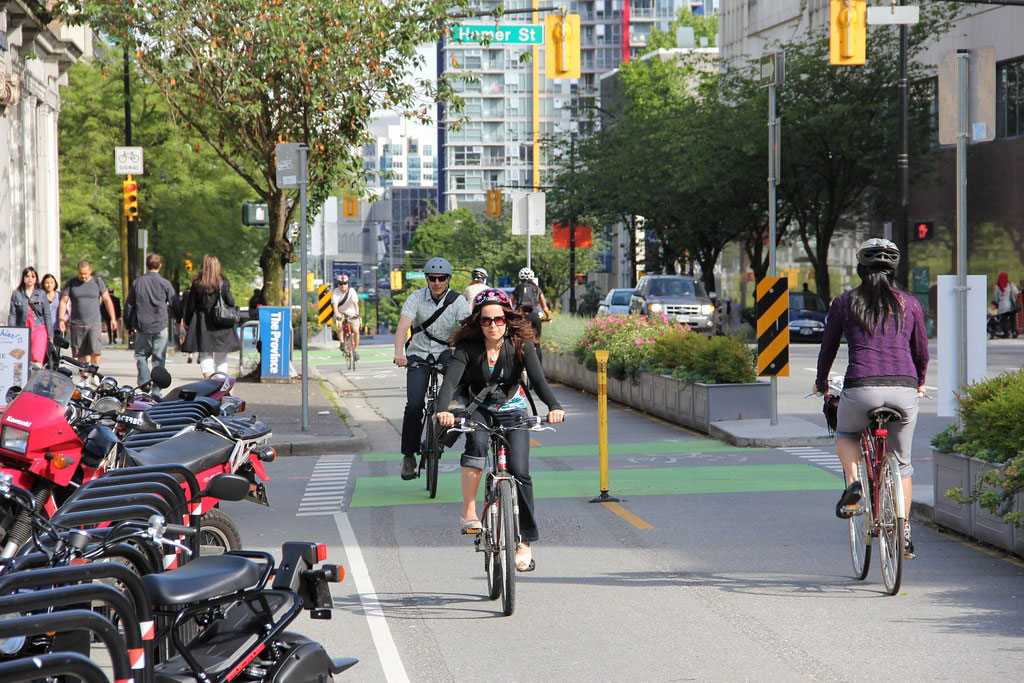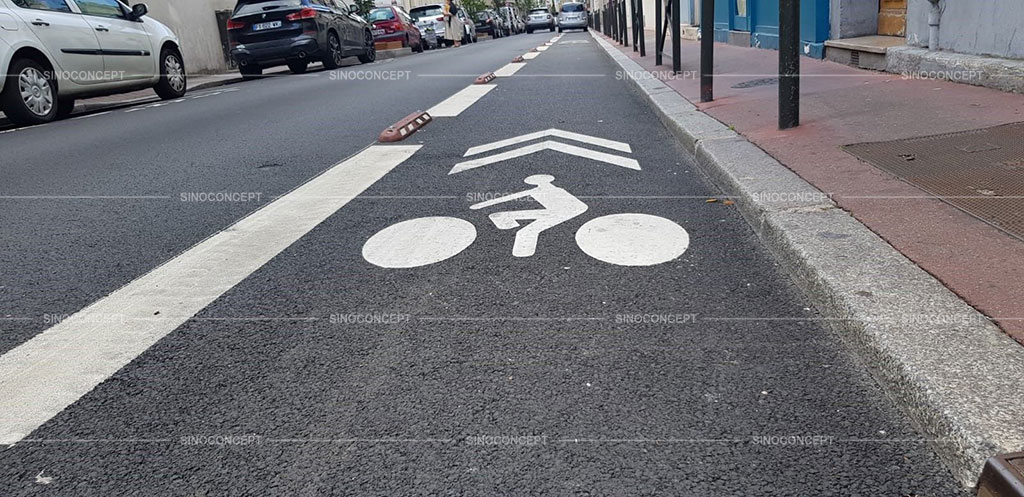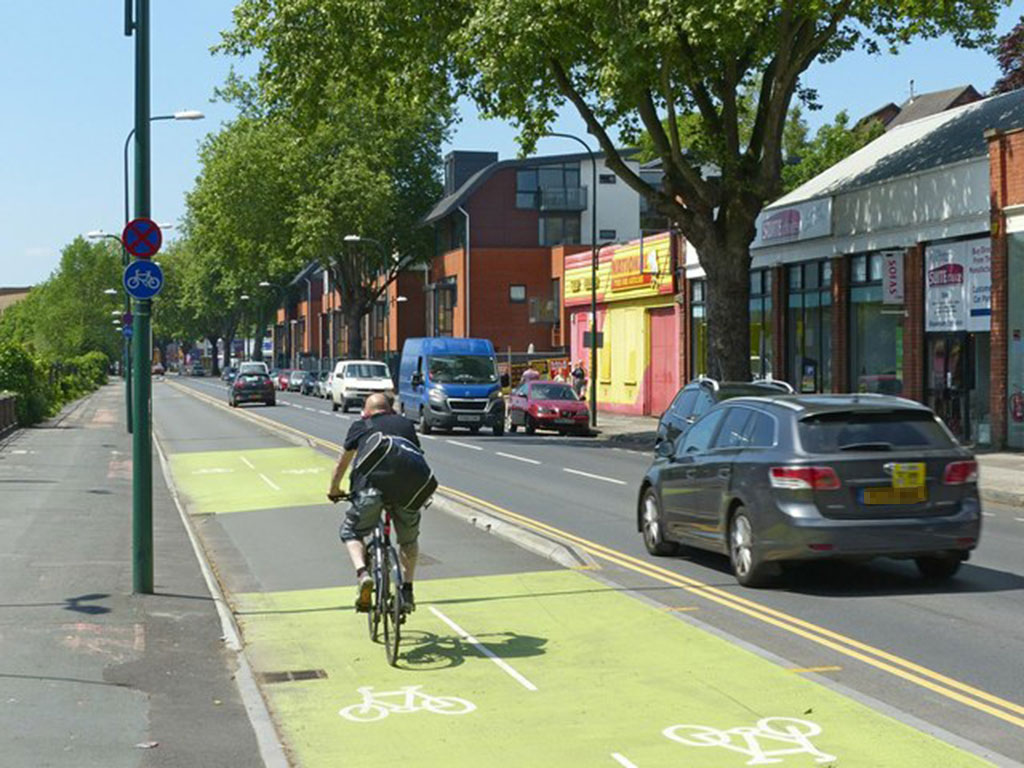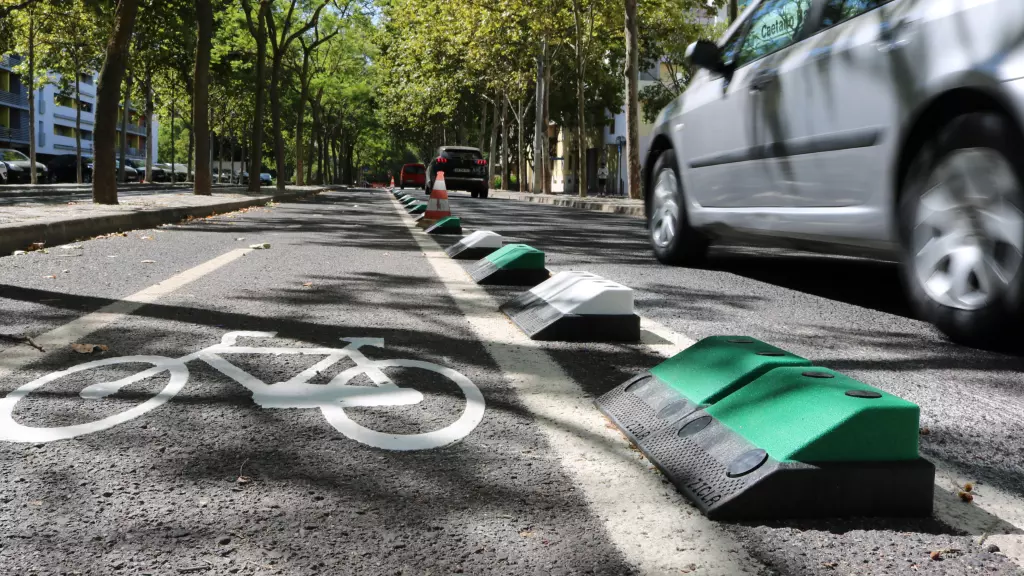Top 4 lane separator materials!
For a few years, people have been becoming concerned about their lifestyle and are engaging in activities that keep them fit. One of them is cycling. However, there are no bike safety measures in place for cyclists.
Due to this, many bicycle riders face the risk of crashes and accidents with other vehicles on the city streets. Therefore, many bikers engage in advocacy campaigns that call for safety measures and separate bike lanes for their safety.
One such measure that can protect cyclists is a lane divider that can create separate bikeways. There are different types of lane dividers because different materials can be used to manufacture them. Without any further ado, let’s unfold the specifications of various lane separator materials.
Do you want to know more about this topic? We also have an article talking about different types of lane dividers.

Rubber lane dividers – your best choice!
One of the most popular material choices for lane dividers is rubber. You can use them for delineation at parking bays, exit ramps, cycle tracks, and cycle lanes.
Such lane dividers ensure that cyclists are protected at roundabouts and intersections from passing vehicles, which can cause collisions, leading to horrifying injuries.
Features that make rubber lane dividers the best choice are as follows:
- Vulcanized rubber gets strong after vulcanization and prevents it from deforming while increasing its strength. Therefore, your lane dividers will stay intact for quite some time;
- Since recyclable rubber is used, they are 100% environmentally friendly;
- Rubber lane dividers are elastic and durable. So they can be used for a very long time;-Manufacturing is done through precise moulding, ensuring that lane dividers are uniform.
Therefore, you can get a uniform series of lane dividers. Some rubber lane dividers have guideposts that can inform the drivers and reduce road accidents.
Rubber lane dividers are generally of the same shape. At Sino Concept, you can find sturdy lane dividers of up to 1,000 mm, which can last a long time.
They can also have road studs embedded that illuminate in dark environments, enabling motorists to see in low-light areas like underground passages.

Pros and cons of concrete lane dividers
Another conventional way to create lane dividers is by using concrete or asphalt. These create separate bike paths for cyclists to ride their bikes.
Plus, concrete lane dividers also create a safe place for pedestrians because such separators can extend the sidewalks or crosswalks for them.
Meanwhile, some of the pros for concrete lane dividers include:
- These concrete lane dividers have a high density, which pins them into one place, disabling them from moving. Therefore, there is long-term stability with concrete lane separators because they can stay in place without moving away;
- Most concrete lane dividers have rebars (steel rod reinforcement), which makes them strong enough to withstand repetitive impact from other vehicles;
- They can also not twist or warp over time, making them durable.
However, they have some serious downsides, which include the following:
- Most concrete lane dividers are grey, which is difficult to spot during fog and winter nights. As a result, there can be severe accidents or vehicle collisions. Plus, they also reduce the width for cyclists to ride their bicycles, causing less space for cyclists to ride their bicycles;
- Most commonly, labour cost is high for their installation, and the construction can increase environmental pollution.
Plus, they are mostly permanent, and you cannot move them without breaking them first.

Is a plastic lane divider good to use?
Plastic lane dividers are another popular material that can create delineation by forming bicycle lanes.
They are very cost-effective lane dividers that can reduce crashes and are growing popular across various places in Europe. Most of them are made from recyclable thermoplastic, which is soft, and the passing vehicles will not have a severe effect on their tires.
Most of the plastic lane divider designs have no sharp edges and are flexible enough to absorb shocks. Therefore, plastic lane dividers are a good option because while they can protect cyclists, they also don’t affect other vehicles.
Some versions of plastic lane dividers may have a reflective coating, making them highly visible even in the dark. You can also install them easily by just using bolts and a hammer. The only downside is that they may lose their colour over time.

Will you use steel lane dividers?
Steel lane dividers have immense strength and will separate the area for bicycles. Most commonly, you can consider steel railings as steel lane dividers because they separate a specific area for cyclists, sealing any gaps.
Not many such lane dividers are seen in city streets, but you can find them mostly on highways and freeways with two-way lanes with a steel lane separator in the middle.
Therefore, steel lane dividers are more suitable for areas with multiple lanes and speeding vehicles.
In city streets, there can be just designated lanes with standard separators to specify bike lanes and reduce traffic congestion. So, steel lane dividers won’t be usable in high pedestrian zones.
You have already read a good part of this article, 👀
We've
got the impression that you like it. 🙂
👇🏻
IF YOU ARE LOOKING TO WORK DIRECTLY WITH A MANUFACTURER,
FEEL FREE TO CONTACT US. WE ARE VERY HAPPY TO HELP!
Other conventional alternatives for lane separator
Traditionally, line markings and pavement markings were among the most common separator tools. Painted lines such as dashed lines, yellow lines, and solid white lines already have a purpose per traffic laws.
Dashed lines mean that you can cross the lanes without facing any penalty. In contrast, you cannot cross lanes in a white solid lane. Similarly, MUTCD and the Department of Transportation created more security measures for cyclists using lane markings, including buffered and striped lanes.
There is an additional space between cyclist lanes and other vehicles in a buffered lane, which reduces the proximity of vehicles crashing into cyclists. In contrast, striped lanes have visual signs and markings which signal cyclists that lanes are specifically for bicyclists.
Similarly, other ways to protect cyclists include curbs, bollards, bike boxes, and regulatory signs. Curbs and bollards are physical materials that create cyclists’ boundaries and designate specific bike lanes.
Bike boxes are green lanes specifically for bicyclists that are found in the traffic lanes. These bike boxes specify a special area where only bicycles can stop at the traffic signals, and no other vehicle can enter that space.
Traffic signals and signs are other ways that can indicate to motorists about any protected cycle lanes up ahead.
Therefore, the measures mentioned above are conventional tools and equally effective in protecting cyclists from injuries.

Conclusion
Biking has been around for centuries, and it’s a hobby, passion, and ritual for many people. More people are riding bicycles now because it’s a good hobby and keeps one fit.
Advocacy campaigns by many bikers have led to a united front, which has caused city councils to implement measures for increasing safety and protecting this noble virtue.
If you are passionate about cycling, you have the right to get protection from terrible accidents in your area. In many jurisdictions, traffic-engineering plans have been implemented, which are security measures for protecting bikers.
If you want high-quality rubber cycle lane separators, Sino Concept is the best place to go. We manufacture high-quality lane dividers for your specific requirements that can last for a lifetime. Visit our website to place your order ASAP.
👇🏻
IF YOU ARE LOOKING TO WORK DIRECTLY WITH A MANUFACTURER,
FEEL FREE TO CONTACT US. WE ARE VERY HAPPY TO HELP!





















